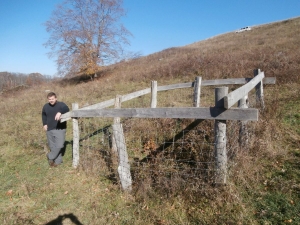Caves and caverns in West Virginia are often located in wooded, rural areas, far from highways and hospitals. As a result, emergency response time and communications can be extremely difficult. For this reason, rescue situations that involve caving in West Virginia can be even more complicated than they might be in developed areas.
Caving Safety Tips
 Never cave alone. We suggest inviting a minimum of four people, including at least one experienced member, on any caving excursion.
Never cave alone. We suggest inviting a minimum of four people, including at least one experienced member, on any caving excursion.- Wear a quality hard hat with a chin strap and an attached lamp or light source.
- Carry new fewer than three sources of light.
- Leave word with someone who will be aware of your return as to which cave you'll visit and when you expect to return.
- Follow the lead of the most experienced caver in the group or the one who best knows the cave.
- If all your lights fail, wait on the spot for a rescue party to arrive.
- Practice ropework and climbing under the guidance of an expert before doing any vertical caving.
- Caving is extremely tiring endeavor. Recognize your limits, rest often, and watch for fatigue in others.
- If you have a medical condition, consult a physician before caving, and inform your caving companions about your condition before the trip.
- Carry a first-aid kit.
- Carry a large garbage bag or poncho to serve as a heat tent, which can also be heated by candle or carbide lamp.
- In case of an immobilizing injury, treat the caver for for shock by keeping him or her warm and contact 911.
- Remaining still can cause shivering, the first symptom of hypothermia. Stay in motion, though avoid exhaustion.
- The slowest caver in the team should set the pace. Proceed only as fast as you can be followed, and keep watch on cavers behind you.
- If lost in a cave, remain calm and conserve your light. If you followed the rule about leaving word, help will arrive soon.
- The National Speleological Society provides a safety resource guide online to further its mission to conserve caves and promote safe caving.




